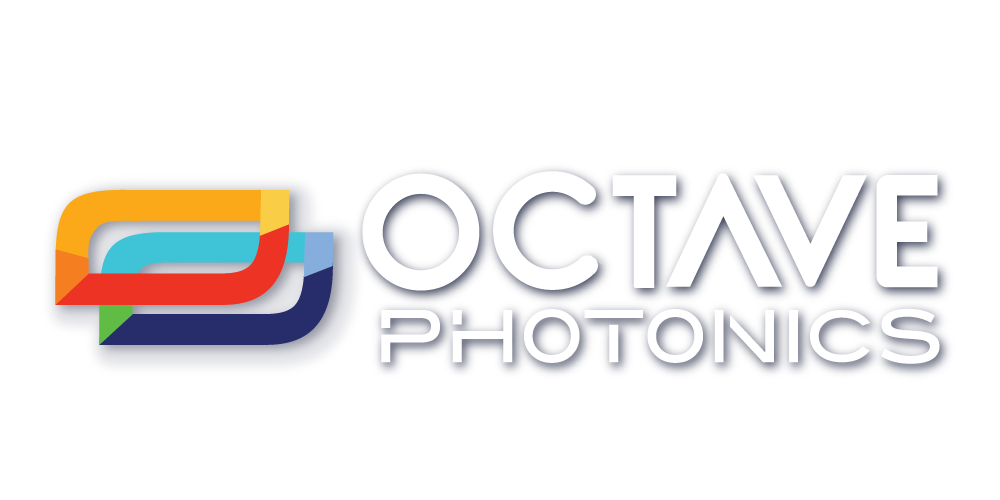Low-Power Frequency Comb Stabilization
Frequency combs provide a link between optical frequencies (hundreds of THz) and microwave frequencies where electronics operate (hundreds of MHz). This capability is essential for optical atomic clocks, which must use frequency combs to keep track of the “ticks” of the “atomic pendulum”.
The unique benefit of the frequency comb is that by measuring just two microwave frequencies – the repetition rate and the carrier-envelope offset (CEO) frequency – the exact frequencies of the optical lines can be determined. While the repetition rate can be easily measured with a photodetector, the offset frequency is more difficult to measure and stabilize.
In most situations, the CEO frequency is measured by a technique known as ‘f–2f interferometry’. In an f–2f setup, the frequency comb is first spectrally broadened via supercontinuum generation in a third order nonlinear medium, which has historically been nonlinear fiber. It is critical that the supercontinuum generation process produce a spectrum that spans one octave of frequency. In other words, the shortest wavelength component of the spectrum must have at least twice the frequency of the longest-wavelength component.
Next, the long-wavelength part of the spectrum is passed through a second-harmonic-generation material to make light at twice the frequency. This “2f” light is then guided to a photodetector, along with the short wavelength light from the supercontinuum generation process. For example, a frequency comb at 1550 nm might undergo supercontinuum generation in nonlinear fiber to span from 1000 to 2000 nm. The 2000-nm light is then frequency doubled in a crystal to produce light at 1000 nm, which interferes on a photodetector with the supercontinuum light at 1000 nm.
The interference of the “f” and “2f” light on the detector produces a signal that oscillates in time at the CEO frequency. This signal can be stabilized via a feedback loop to the laser oscillator. Combined with stabilization of the repetition rate, this stabilization converts a pulsed laser into a fully stabilized frequency comb.
Figure 1. Supercontinuum spectrum from a packaged Octave Photonics f-2f waveguide. This waveguide enables the generation of light directly at twice the pump frequency with low input pulse energy.
When using nonlinear fiber, the supercontinuum generation process typically requires a reasonably large amount of pulse energy. The components in comb systems devoted to locking the offset frequency in an f–2f configuration can make up a large portion of the power budget, especially in low-power applications. Moreover, combs that wish to operate at GHz repetition rates can be difficult to stabilize since the average power required for broadening in nonlinear fiber becomes prohibitively high.
In contrast, supercontinuum generation in nonlinear waveguides requires significantly less pulse energy, often by a factor of 10 or more. Additionally, nonlinear waveguides can produce broader spectra, allowing a 1560 nm pump laser to generate supercontinuum directly at 780 nm. This allows the 1560 nm light itself to be guided to the second harmonic crystal, improving the efficiency of the second-harmonic-generation process and further lowering the pulse energy requirements for the f–2f system. Indeed, nonlinear waveguides have recently enabled a fully stabilized frequency comb to operate using only power from a 5-volt USB battery!
Figure 2. Carrier—envelope offset frequency detection with an Octave Photonics supercontinuum waveguide. This radio-frequency spectrum was recorded using an f–2f interferometer. The nonlinear waveguide allows the CEO frequency to be clearly observed with 40 dB signal-to-noise ratio, using significantly less pulse energy and average optical power than other approaches.
The fiber-connectorized nonlinear-waveguide-based devices from Octave Photonics provide a ready-made solutions for low-power supercontinuum generation tailored for frequency-comb offset stabilization. Contact Octave Photonics to determine if a nonlinear waveguide device could enable new capabilities for your frequency combs.
Further reading:
K. F. Lamee, D. R. Carlson, Z. L. Newman, S.-P. Yu, and S. B. Papp, "Nanophotonic tantala waveguides for supercontinuum generation pumped at 1560 nm," Opt. Lett. 45, 4192 (2020)
P. Manurkar, E. F. Perez, D. D. Hickstein, D. R. Carlson, J. Chiles, D. A. Westly, E. Baumann, S. A. Diddams, N. R. Newbury, K. Srinivasan, S. B. Papp, and I. Coddington, "Fully self-referenced frequency comb consuming 5 watts of electrical power," OSA Continuum 1, 274 (2018).
D. R. Carlson, D. D. Hickstein, A. Lind, S. Droste, D. Westly, N. Nader, I. Coddington, N. R. Newbury, K. Srinivasan, S. A. Diddams, and S. B. Papp, "Self-referenced frequency combs using high-efficiency silicon-nitride waveguides," Optics Letters 42, 2314 (2017).
[arXiv: 1704.03909]



